Bicycles, one of the most versatile means of transport, come in various shapes and sizes. Each type designed with a specific purpose in mind, whether it's for commuting, racing, or off-road adventures. Understanding and classifying these bicycles can help you make an informed decision when purchasing a bike that suits your needs. Here's a guide to help you understand and classify different types of bicycles.
Road Bikes
As the name implies, road bikes are designed for riding on paved roads. They are usually lightweight with narrow tires and drop handlebars to allow for speed and efficiency. Within this category, there are subcategories like racing bikes, endurance bikes, and touring bikes. Racing bikes are built for speed with a focus on lightweight construction and aerodynamics. Endurance bikes prioritize comfort over long distances, while touring bikes are designed for carrying loads over long distances.
Mountain Bikes
Mountain bikes are built for off-road trails. They are characterized by wide, knobby tires for traction, and they have a suspension system to absorb shocks from rough terrains. There are various types of mountain bikes, including cross-country, trail, enduro, and downhill bikes, each designed for specific types of off-road riding.
Hybrid Bikes
Hybrid bikes combine the characteristics of both road and mountain bikes. They are versatile bikes that you can use for commuting, light trail riding, or casual cycling. They typically have flat handlebars for comfortable upright riding position and wider tires than road bikes for better stability and comfort.
Folding Bikes
Folding bikes, as the name suggests, can be folded for easy storage and transport. They are great for city dwellers who have limited storage space or for those who need to take their bike on public transportation.
Women's Bikes
Women's bikes are designed with the average woman's anatomy in mind. They usually have shorter top tubes and taller head tubes, which can provide a more comfortable riding position for many women. The size of the bike is also important, and for a woman who is 1.65m tall, a small to medium-sized bike would typically be suitable.
Bike Brands
There are numerous bike manufacturers out there, each with their own strengths. For instance, Trifox is a reputable brand known for their high-quality bikes. Whether you're looking for a road bike, mountain bike, or something else, Trifox has a range of options to choose from. You can explore their offerings on official store.
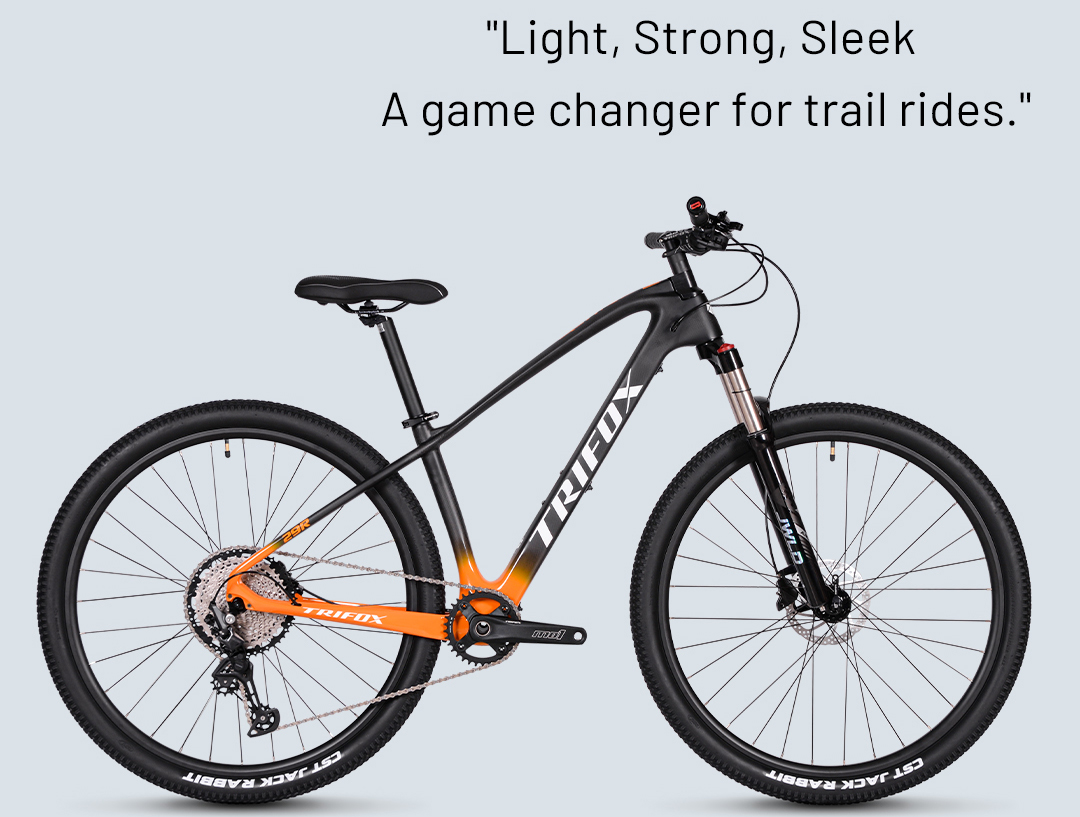
In conclusion, understanding and classifying bicycles can significantly enhance your cycling experience, whether you're a seasoned professional or a beginner. By determining what you want to get out of your bike, you can find the type that best suits your needs and preferences.
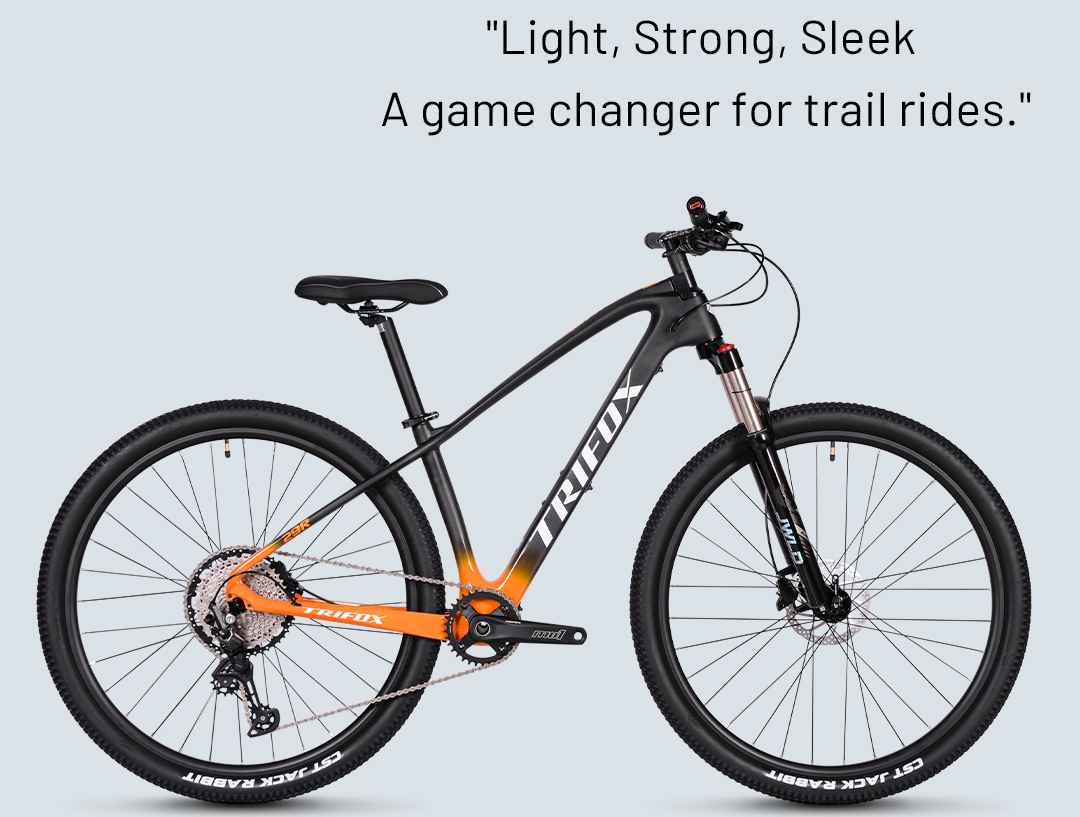
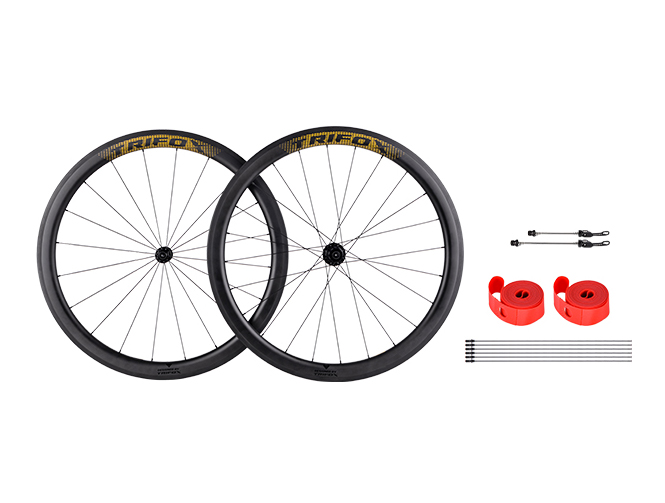
Cycling is a passion for many, and part of the thrill comes from customizing and upgrading your bicycle. One such upgrade that can significantly improve your cycling experience is installing quick release carbon wheels. These wheels are not only lightweight and durable but also allow for easy installation and removal.
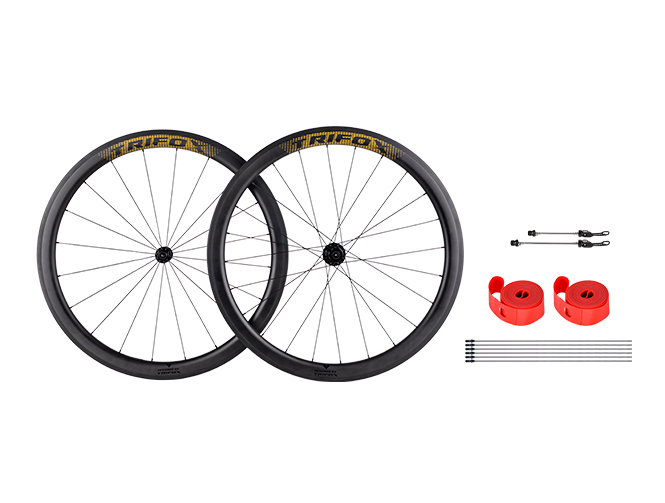
Understanding Quick Release Carbon Wheels
Quick release carbon wheels are a popular choice among cyclists due to their excellent balance of weight, strength, and aerodynamics. They come with a quick-release mechanism that makes it easy to install and remove the wheels without any tools. Trifox offers a range of high-quality quick release carbon wheels, including the Rim Brake Clincher Carbon Wheelset WT17 and the V-Brake Clincher Carbon Wheelset WT18.
Step 1: Prepare Your Bicycle
Start by preparing your bike. Position it so it's stable and won't tip over during the wheel installation process. If you have a bike stand, this would be the best time to use it.
Step 2: Remove the Old Wheels
To remove the old wheels, open the quick release lever on the wheel hub and unscrew the end nut if necessary. Once loosened, the wheel should slide out easily from the dropouts (slots in the frame and fork where the wheel axles go).
Step 3: Insert the New Wheel
Take your new quick release carbon wheel and slide the axle into the dropouts. Make sure the wheel is centered in the frame or fork.
Step 4: Secure the Quick Release
Once the wheel is in place, close the quick release lever to secure the wheel. The lever should be firm but not overly tight. If necessary, adjust the tension using the nut on the opposite side of the lever.
Step 5: Check the Installation
After installing the wheel, give it a spin to make sure it's turning freely. Also, check that it's securely held by the quick release and isn't wobbly or misaligned.
Conclusion
Installing quick release carbon wheels on your bicycle is a straightforward task that can greatly enhance your riding experience. It not only improves your bike's performance but also makes wheel removal for transportation or tire changes a breeze. As always, ensure you're familiar with your bike's specifications and the product details before starting the installation.
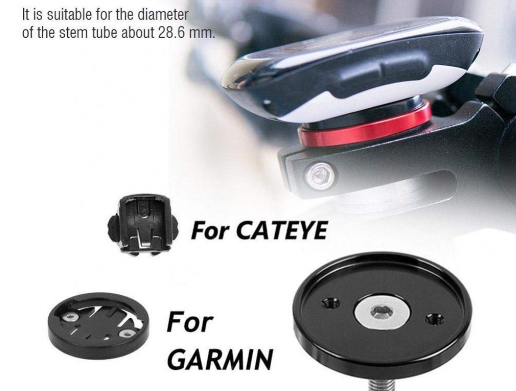
Bike computers are an essential tool for cyclists. They provide valuable data such as speed, distance traveled, and heart rate, which can enhance your cycling experience and help you achieve your fitness goals. However, to make the most of your bike computer, it must be properly mounted. In this blog post, we will guide you on how to correctly mount your bike computer on a stem mount.
The Stem stem bike computer mount
A stem mount is a device that attaches to the stem of your bicycle, providing a secure and convenient location for your bike computer. It allows you to keep your eyes on the road while easily viewing your ride data. One of the best options in the market is offered by Trifox, known for its durable and easy-to-install bike computer mounts.
Step 1: Selecting the Right Mount
The first step is to choose a stem mount compatible with your bike computer. Check the specifications of both your bike computer and the stem mount to ensure they match.
Step 2: Positioning the Mount
Once you have the right mount, decide where on the stem you want to position it. The ideal spot is usually in the middle of the stem, where it's easy to see the computer screen without straining your eyes or neck.
Step 3: Securing the Mount
Next, position the mount onto the stem and secure it in place. Some mounts come with rubber inserts to fit different stem sizes; ensure you use the right one for a snug fit. Tighten the mount until it is firmly secured to the stem. Be careful not to over-tighten it to avoid damaging the stem or the mount.
Step 4: Attaching the Bike Computer
Once the mount is securely attached to the stem, it's time to attach your bike computer. This usually involves sliding the computer into the mount until it clicks into place. Ensure the computer is secure and does not wobble or slide out of the mount.
Step 5: Adjusting the Viewing Angle
Finally, adjust the viewing angle of the bike computer. The goal is to position the screen so that you can easily see it while riding. This might require some trial and error to find the perfect angle.
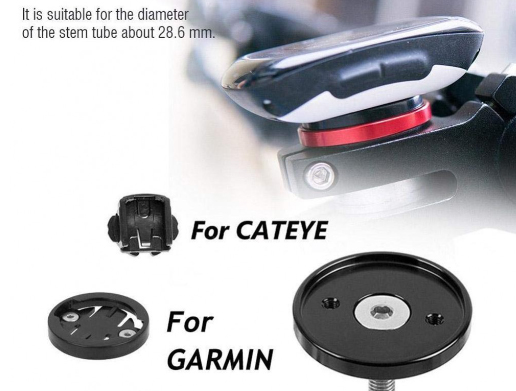
Conclusion
Mounting your bike computer on a stem mount enhances your cycling experience by providing easy access to valuable ride data. By following these steps, you can ensure your bike computer is securely installed and conveniently positioned for optimal use. Remember, proper installation is crucial for the longevity of your equipment and for a seamless cycling experience.
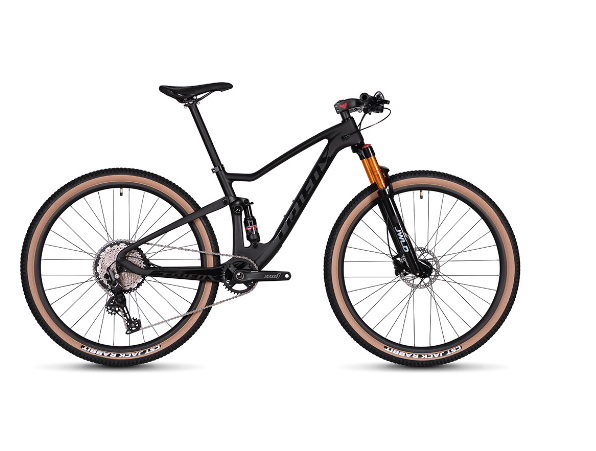
Competitive mountain biking is a sport that demands physical strength, technical skills, and mental resilience. With the right training regimen and equipment, you can prepare yourself to face the challenges of the trail head-on.
Preparing Your Equipment: The Trifox Pioneer Full Suspension Bike
Before you begin your training, it's crucial to have the right equipment. The Trifox Pioneer full suspension bike is an excellent choice for competitive mountain biking. It features a lightweight carbon fiber frame, full suspension for improved control on rough terrain, and a high-quality drivetrain for smooth, reliable shifting.
Ensure your bike is properly set up before you start training. Adjust the saddle height for optimal pedaling efficiency, and fine-tune the suspension settings to match your weight and riding style. Regular maintenance, including cleaning and lubricating the drivetrain, checking tire pressure, and inspecting the brake pads, is also essential to keep your bike in top condition.
Physical Training for Competitive Mountain Bike
1. Endurance Training
Endurance is crucial for competitive mountain biking. Incorporate long, steady rides into your training routine to improve your cardiovascular fitness. Start with shorter distances and gradually increase your mileage as your fitness improves.
2. Strength Training
Mountain biking requires strength, particularly in the core and upper body. Include strength training exercises in your routine, focusing on the abs, back, arms, and shoulders. Squats and lunges can help strengthen your legs for more powerful pedaling.
3. High-Intensity Interval Training
HIIT involves short bursts of intense exercise followed by recovery periods. This type of training can help improve your power and speed, both of which are important for competitive mountain biking.
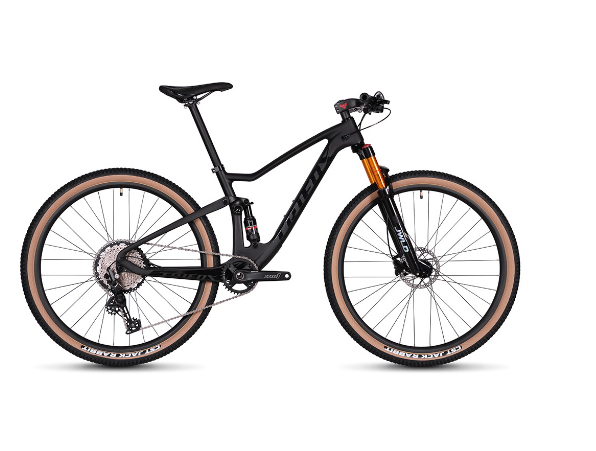
Technical Skills Training
1. Bike Handling Skills
Practice maneuvers like cornering, climbing, descending, and navigating obstacles. Mastering these skills can help you maintain control of your bike in challenging trail conditions.
2. Gear Shifting
Effective gear shifting can help maintain your momentum on varying terrains. Practice shifting gears smoothly during your training rides.
3. Brake Control
Good braking technique is crucial for safe and efficient riding. Practice using both brakes together for balanced stopping power, and learn to modulate your braking to avoid skidding.
Mental Preparation
Competitive mountain biking also requires mental toughness. Visualization techniques can help you prepare for the challenges of a race. Imagine yourself successfully navigating the course and overcoming obstacles. This can boost your confidence and improve your performance on race day.
Training and preparing for competitive mountain biking is a demanding but rewarding process. With the right equipment like the Trifox Pioneer full suspension bike, a comprehensive training regimen, and a strong mindset, you can take your performance to new heights.
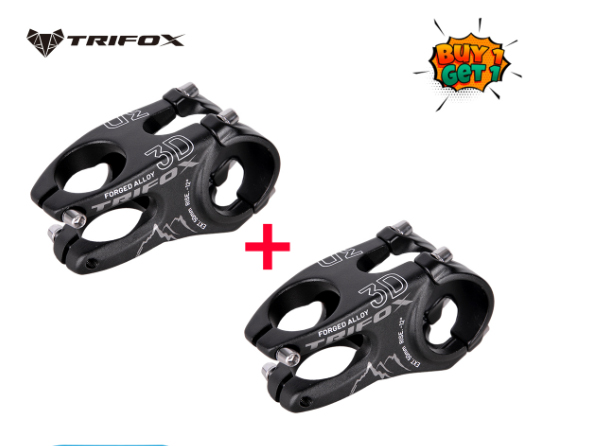
A bike stem's function is straightforward—it connects your handlebars to your fork steerer. Sounds simple, right? Well, as with most things in cycling, the devil is in the details. The right bike stem can make a significant difference to your comfort, handling, aerodynamics, and even the overall weight of your bike. In this guide, we'll explore the importance of the bike stem, particularly the lightweight alloy variety, and how to choose and install one that perfectly suits your needs.
Understanding the Role of Your Bike Stem
The stem might just be one of the tiniest components on your bike, but it plays a crucial role in rider comfort and overall performance. It affects how the bike fits and feels, how it steers, and can even influence aerodynamics. For cyclists looking to reduce the overall weight of their bikes, moving to a lightweight alloy stem can be a game-changer.
Types of Stems
There are various types of bike stems on the market, ranging from the traditional quill stems to the newer threadless stems, which have become the standard on most bikes. Within these categories, you have different lengths and angles to choose from, and this diversity means there's a stem for every style of riding.

The Lightest Alloy Stems in the Market
When we talk about the lightest stems, alloy stands out as a popular choice. It's known for being both strong and light, which is a perfect combination for cyclists who want to maintain or improve performance without sacrificing durability.
Advantages of a Light Alloy Stem
Light alloy stems are popular for a number of reasons, including:Weight Reduction: The most obvious advantage is the reduction in weight. A lighter stem can contribute to a lighter bike overall, making climbing and acceleration easier.
Rigidity: While being lightweight, alloy stems are rigid, offering a solid connection between your handlebars and the fork. This can improve steering precision, especially when riding at high speeds.
Affordability: Compared to carbon fiber, alloy is generally more affordable, making it a compelling choice for those looking for a performance boost without breaking the bank.
How to Choose the Right Stem for You
Choosing the right stem is a personal decision that depends on a variety of factors, including the type of bike you ride, the type of riding you do, and your own physical dimensions and riding style.
Installing Your Light Alloy Stem
Once you've selected the perfect stem for your bike, it's time to install it. This process can be relatively simple, but precision and attention to detail are key.
Tools and Preparation
Before you begin, make sure you have the correct tools on hand, including Allen keys, torque wrenches, and maybe some carbon assembly paste if your new stem is for a carbon handlebar. It's also a good practice to clean the fork steerer and handlebar's clamping area to ensure a secure grip.
Proper Alignment
Properly aligning your stem is critical. It should be centered over your front wheel and squared with the bike's top tube. Take your time with this step to avoid any quirks in handling that off-center alignment could cause.
Torque to Spec
When tightening your stem bolts, it's essential to use a torque wrench and tighten to the manufacturer's specifications. Over-tightening can damage components and under-tightening puts you at risk of your handlebars slipping when riding.
The Bottom Line: Enhance Your Riding with the Right Alloy Stem
Investing in a high-quality, lightweight alloy stem can be a tremendous performance upgrade for your bike. By considering your riding style, ensuring proper fit, and installing and caring for the stem correctly, you're one step closer to a more comfortable and efficient cycling experience.
Remember that the stem is just one component in the larger picture of your bike's fit and setup. It's worth considering a professional bike fit if you're in doubt, as a properly fit bike is crucial for both comfort and performance. Happy cycling!
In summary, the choice of a stem might be small in size, but its impact on your cycling experience can be quite significant. Taking the time to research, select, and install the right alloy stem for your needs can lead to a more comfortable ride and potentially even better race results.
It's all about finding that perfect balance between performance and comfort, and a great alloy stem can be the perfect upgrade to help you achieve it.
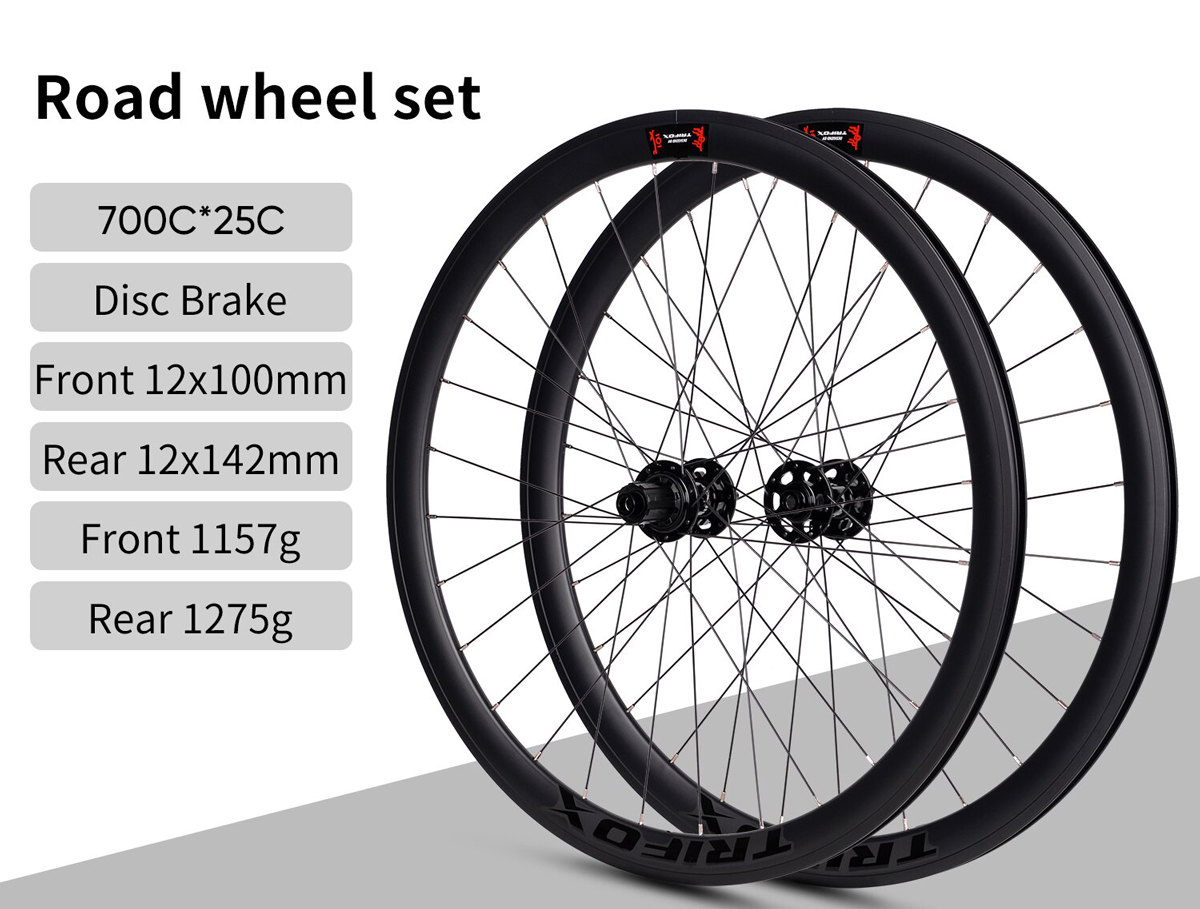
Rim brake road wheels are a critical component of any road bike when it comes to performance. They affect the handling, speed, and overall reliability of your bike. Whether you are a seasoned pro or just getting started, choosing the right set of wheels and maintaining them properly can make all the difference. In this post, we will guide you through the process of selecting the right rim brake road wheels for your bike and help you maintain them to ensure optimal performance.
Section 1: Materials and Construction
When choosing a rim brake road wheel, the first factor to consider is the material and construction. Carbon fiber wheels are popular due to their light weight and stiffness, but they can come with a hefty price tag. Aluminum wheels are more affordable and offer good performance, but may not be as light as carbon fiber. When it comes to construction, look for wheels with a higher spoke count as they tend to be more durable and better at distributing weight.
Section 2: Rim Width and Depth
Another crucial aspect to look at when choosing your rim brake road wheels is the width and depth of the wheel. Wider rims tend to offer better aerodynamics, better handling, and are better for larger tires. On the other hand, shallow rims are lighter and better for climbing. Depending on your riding style and preferences, you may want to opt for a deeper or shallower rim.
Section 3: Brake Pads and Wear
One of the most important aspects of maintaining your rim brake road wheels is checking your brake pads and wear regularly. Brake pads can wear out over time and may require replacement, so checking them periodically can save you from potential accidents. Also, ensure that the brake pads are compatible with your chosen wheels to avoid poor stopping power.
Section 4: Regular Cleaning and Lubrication
Maintaining your rim brake road wheels also involves regular cleaning and lubrication. Dirt and grime buildup can affect the performance of your wheels, so make sure to clean them regularly. Use a mild soap and water to clean the wheels, and then lubricate your bearings and spoke nipples to keep them running smoothly.
Section 5: Proper Storage
Finally, proper storage of your rims can help ensure their longevity. Store them in a cool and dry area, away from any moisture or dust. Additionally, if you are not using them for an extended period, consider removing the tires and tubes and storing them separately to avoid any damage or deformation.
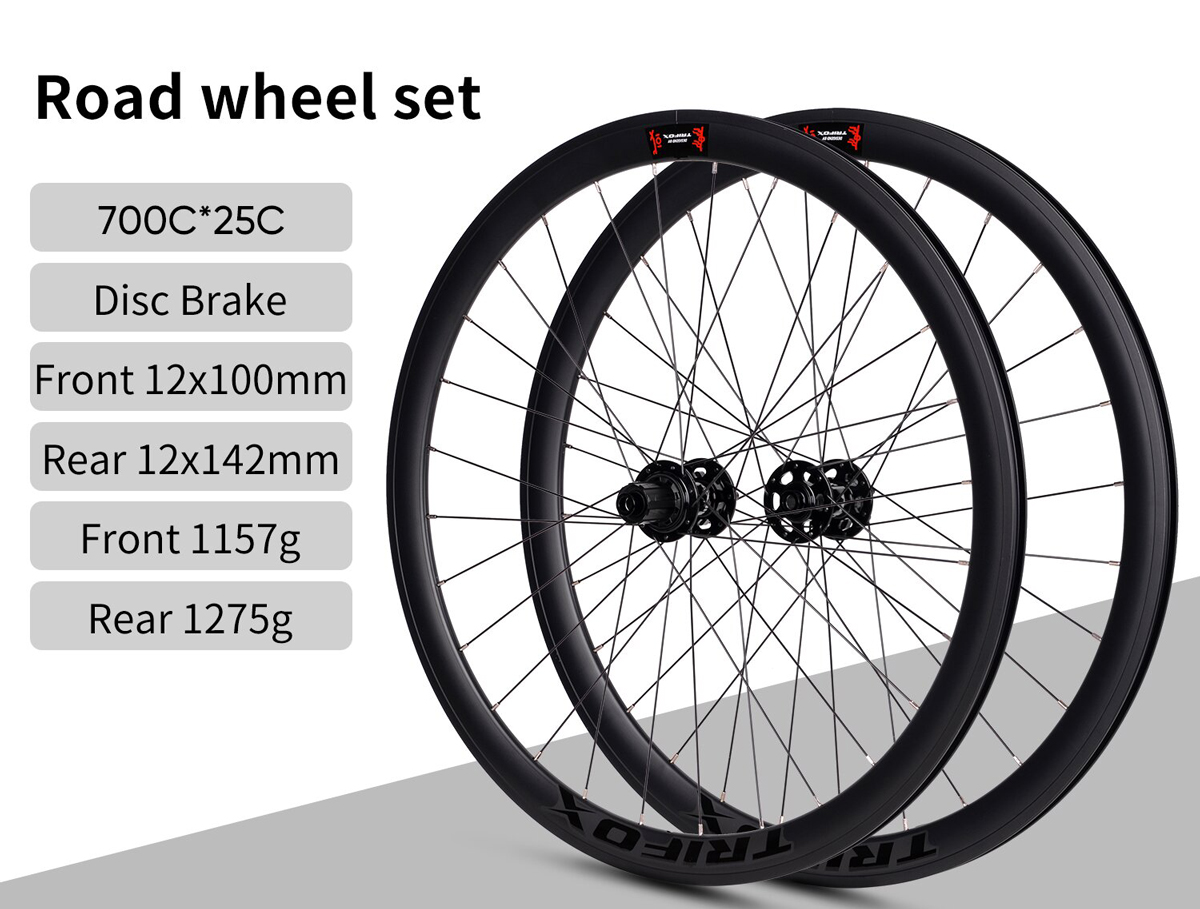
Choosing and maintaining your rim brake road wheels can significantly impact your bike’s overall performance and longevity. It's crucial to consider the material, construction, rim width and depth, brake pads and wear, regular cleaning and lubrication, and proper storage.
By following these guidelines, you can ensure that your bike wheels are always optimally performing, giving you a smoother ride with less chance of accidents. So, ensure that you choose the right rims for your bike and stay mindful of their upkeep to keep riding at your best.
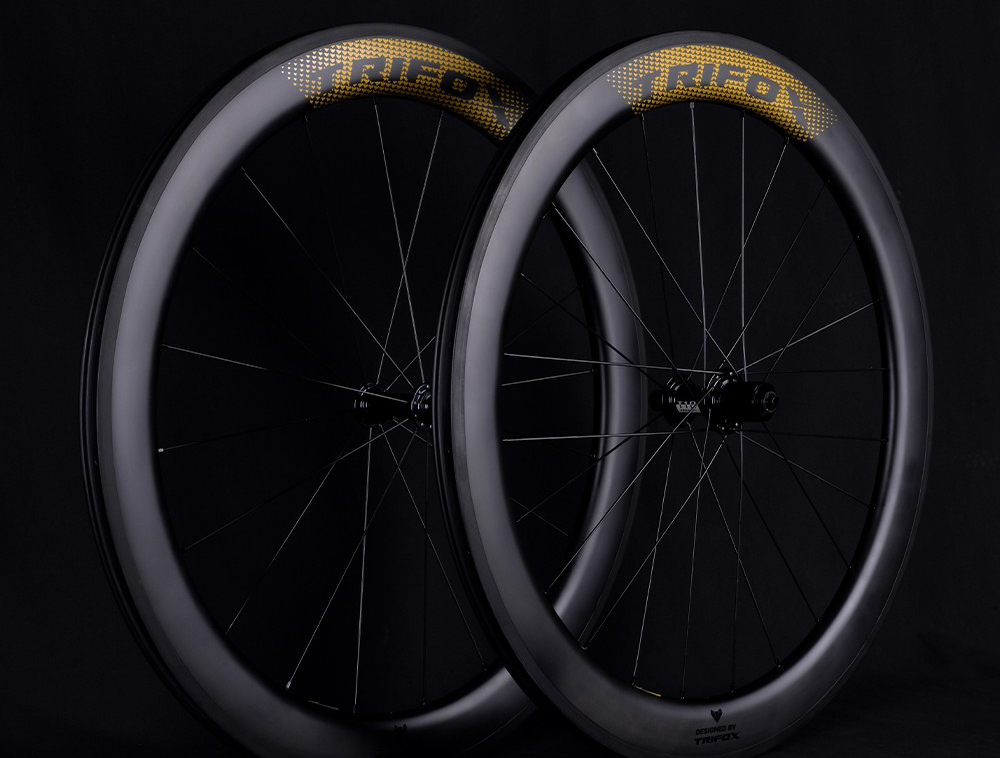
When it comes to cycling, performance is key. One component that plays a pivotal role in how your bike behaves is the wheelset. For road cyclists, carbon rim brake wheels are an increasingly popular choice. They’re lightweight, strong, and offer superior braking performance. But what are carbon rim brake wheels, and why are they so popular?
1. What Are Carbon Rim Brake Wheels?
Carbon rim brake wheelset are made of a carbon fiber composite that makes them much lighter than traditional aluminum wheels. They’re also superior in terms of strength and stiffness, which means they offer better handling and responsiveness. The braking surface of a carbon rim brake wheel is made of a special material that provides excellent stopping power even in wet conditions. This is a significant advantage over traditional aluminum wheels, which tend to lose stopping power in the rain.
2. The Advantages of Carbon Rim Brake Wheelset
There are several advantages to using carbon rim brake wheels on your road bike. As we’ve already mentioned, they’re lightweight and strong, which means you can enjoy a more responsive ride. They also offer superior braking performance, which can be the difference between a safe ride and a dangerous one. In addition, carbon rim brake wheels will typically last longer than traditional aluminum wheels due to their superior strength. Finally, carbon rim brake wheels look great, with their sleek, modern design adding a touch of style to any road bike.
3. The Importance of Proper Maintenance
While there are many advantages to using carbon rim brake wheels, it’s important to keep in mind that they do require proper maintenance. One of the most important aspects of maintenance is ensuring that you’re using the correct brake pads. It’s also essential to regularly inspect your wheels for any signs of wear or damage. Proper storage is also crucial, as carbon rim brake wheels can be susceptible to damage from impacts, excessive heat, and humidity.
4. How to Choose the Right Carbon Rim Brake Wheelset
When it comes to choosing the right carbon rim brake wheels for your road bike, there are several factors to consider. First and foremost, you’ll want to determine your budget, as carbon rim brake wheels can be quite expensive. You’ll also want to consider things like weight, stiffness, and aerodynamics. Additionally, it’s important to choose a reputable brand that is known for producing high-quality, reliable wheels.
5. Recommended Carbon Rim Brake Wheels
If you’re in the market for a reliable set of carbon rim brake wheels, there are several options available. One popular choice is the TriFox Carbon Road Bike Wheels, which are lightweight, durable, and offer excellent braking performance. They’re available in a variety of sizes to fit virtually any road bike.
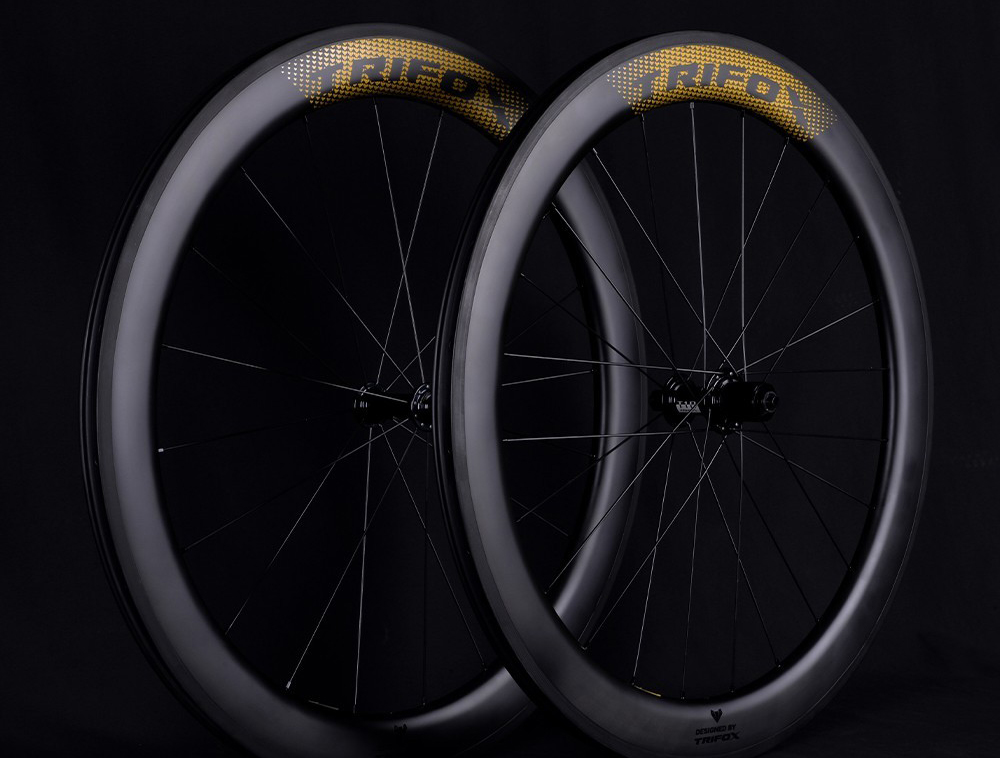
Carbon rim brake wheels are an excellent choice for serious road cyclists who are looking for the best possible performance from their equipment. By choosing a reputable brand and properly maintaining your wheels, you can enjoy a lighter, stronger, more responsive ride, with superior braking performance in all conditions.
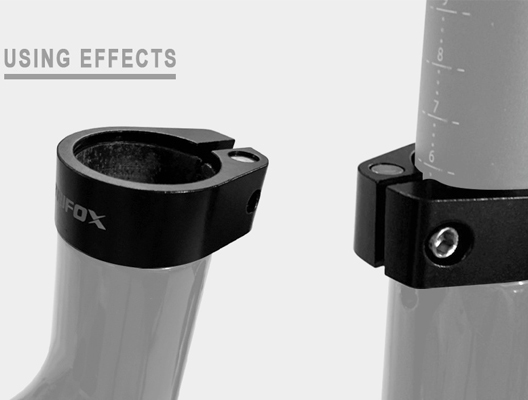
One of the most essential parts of your bike is the seat post. It is responsible for the comfort of your ride and stability while cycling. The seat post clamp, on the other hand, is responsible for keeping the seat post in place. If you're looking for a new seat post clamp, you might want to consider a quick-release post clamp. In this blog post, we will discuss the pros and cons of using a quick-release post clamp and help you decide if it's the best option for your bi
What is a Quick Release Post Clamp?
A quick-release post clamp is a mechanism that allows you to remove and adjust the seat post of your bike easily. This mechanism uses a lever that attaches to a cam system, which tightens and loosens the seatpost. It provides an easy way to adjust saddle height on the go and transfer the saddle and post between bikes.
Pros of Using a Quick Release Post Clamp
1. Easy Adjustability- One of the main advantages of quick release post clamps is that they provide an easy way to adjust the seat height on the go. This feature is especially useful for mountain bikers who need to frequently switch between uphill and downhill riding positions.
2. Easy Maintenance- Quick-release post clamps are easier to maintain than traditional clamps since they don't have bolts or screws that can easily wear out or rust.
3. Easy to Transfer between Bikes- If you have multiple bikes, using a quick-release post clamp can make it easy to move the seat post and saddle from one bike to another. It can also save you money since you only need to purchase one seat post per saddle for all your bikes.
Cons of Using a Quick Release Post Clamp
1. Risk of Theft- Since it's easy to remove a quick-release post clamp, it makes the saddle and post vulnerable to theft. Some riders even remove the clamp and take the saddle with them into their office, which means the bike might be left unsecured.
2. Lower Clamping Force- Traditional clamps tend to have more clamping force and are, therefore, more secure. Quick-release post clamps have less clamping force, which can lead to slipping and movement of the saddle while riding.
3. Less Durable- Quick-release post clamps are made of plastic and can wear out faster than traditional metal clamps.

A quick-release post clamp can provide an easy way to adjust the seat post height on the go, transfer the saddle, and maintain your bike. However, it has its drawbacks, like lower clamping force and lower durability. If you're a frequent mountain biker or have multiple bikes, a quick-release post clamp might be the perfect option for you. It would save you time, money, and the hassle of adjusting the seat post every time you switch bikes.
However, if you're concerned about theft or need a more secure clamp, then a traditional clamp might be a better option. In the end, it all comes down to personal preference, intended use, and priorities when it comes to your bike's gear.
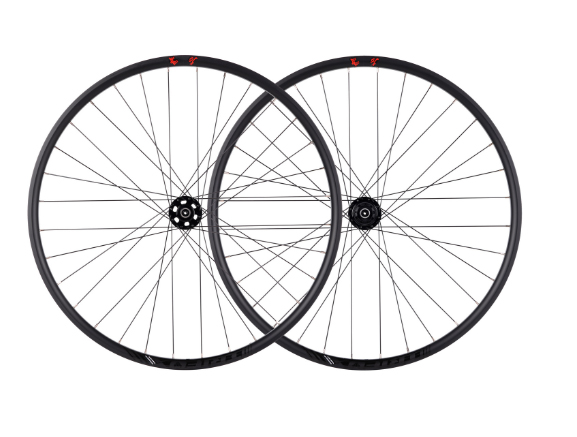
When it comes to cycling, every rider’s goal is to have a smooth and enjoyable ride. And when you decide to upgrade your bike, choosing the right wheelset can make a huge difference in your cycling experience. The latest trend in the biking industry is the 29er wheelset. It’s a bit larger than the standard wheels and comes in a lighter weight that makes it an exceptional choice for different terrains.
1. Increased Speed and Efficiency:
One of the most significant advantages of a lightweight 29er wheelset is the increased speed and efficiency that comes with it. The larger wheel size allows you to roll over obstacles, including roots and dips, much more efficiently. You’ll glide over obstacles with ease and pick up speed quickly, which makes it perfect for long rides or races. Additionally, the lighter your bike is, the less energy you’ll need to pedal, which can make a significant difference on those uphill climbs.
2. Improved Handling and Control:
A lightweight 29er wheelset can enhance your riding experience by providing better handling and control. With a larger wheel diameter, you’ll have a larger contact patch, which gives you better control while cornering and descents. Compared to 26-inch wheels, the 29er has a greater angle of attack that helps you ride through corners with more stability and ease. You’ll feel a noticeable difference in control when riding rough terrain thanks to the improved stability.
3. Easy Adaptability to Different Terrains:
29er wheelsets are designed for versatility. They perform well in different terrains, including off-road, gravel, and road conditions. A lightweight 29er wheelset will provide extra cushioning on rough terrains without compromising your speed, which makes it an excellent choice for long-distance rides. You’ll also find that the larger wheel size gives you a more comfortable ride than the standard size.
4. Durability and Longevity:
When it comes to investing in a bike wheelset, durability is key. With a lightweight 29er wheelset, you can be sure that you’re getting long-lasting and high-quality wheels. A 29er wheelset is built to withstand different terrains and impacts, ensuring that you get the most out of your investment. The aluminum or carbon fiber construction in the wheelset is lightweight, providing high strength-to-weight ratios and durability.
5. Stylish and Eye-catching:
Apart from the performance benefits, a lightweight 29er wheelset is bound to enhance the aesthetic appeal of your bike. The bigger wheels look more stylish and eye-catching than the standard size wheels. Additionally, most bike wheelsets come in different colors, allowing you to match them with your bike frame, providing a seamless and polished look for your bike.
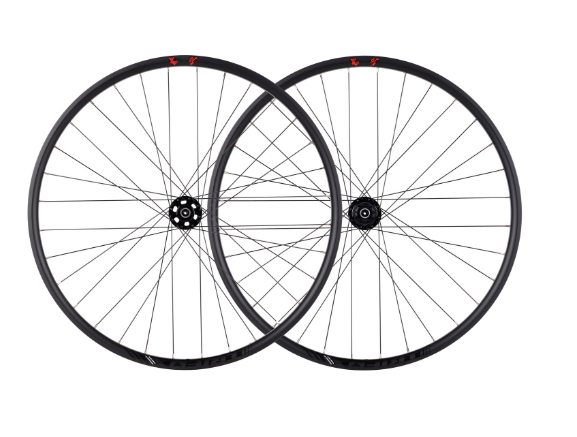
If you want to take your biking experience to the next level, upgrading to a lightweight 29er wheelset is the way to go. This wheelset provides numerous advantages such as speed, control, adaptability, durability, and style. You can find affordable lightweight wheelsets in various shops and online stores, although be sure to choose a reputable brand to avoid low-quality products.
Trifoxbike 29er wheelsets, for example, are known for their strength, durability, and lightweight construction. Upgrade your riding experience today and invest in a lightweight 29er wheelset for your next bike ride!

























































